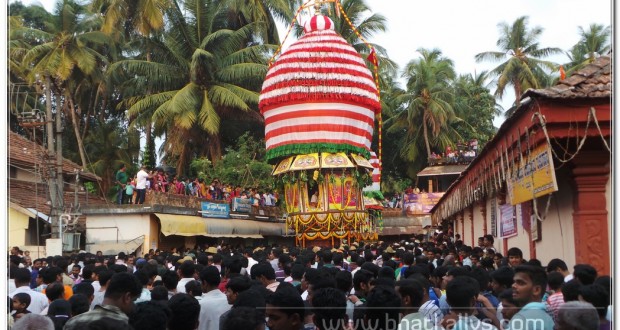
http://www.bhatkallys.com/wp-content/uploads/2015/03/ter-habba-32-620×330.jpg
BHATKAL, KARNATAKA. INDIA, March 30, 2015 (Bhatkal News): HPI Note: The original article states:
“Bhatkal Hanumanth Temple’s historical Rath (Chariot) was pulled on March 28 evening by a huge gathering of Hindu brethren with traditional fervor and in a peaceful manner. There were special arrangements for pooja (worship) and in the evening, the chariot was pulled by large number of devotees.”
“Thousands of devotees had flocked here for seeing the rath and its pooja (worship). This event designates historical Hindu-Muslim brotherhood and as usual today also, a group of Hindu brethren under the leadership of Surendra Shahnbhag, went to Chirkin Shabandari’s house at Sultan Street and took permission from Ansar Shabandari to pull the chariot.”
This article, http://timesofindia.indiatimes.com/ci … /articleshow/45944454.cms,
recounts the origin of the custom–but gives no precise date–in this town which saw severe communal riots in 1993:
“Every April, the Channapattana Hanuman Temple in the middle of the town takes out a procession of its prized chariot, carrying the God. But it is not done without the permission of the Muslim Shahbandari family.The story goes that several years ago, the chariot broke down during an annual procession. The temple authorities and local Hindu worshippers didn’t have the money to repair it and get on with the procession. That’s when Shahbandari family pitched in with funds. Since then, the ritual of seeking their permission before taking out a procession began. ‘Many years later, some youths found it ridiculous to seek permission from a Muslim family and protested. That year, the chariot was brought out without permission and it’s said to have developed a snag again in front of the Muslim house. No one has broken the ritual since,’ says Qamaruddin Mashaikh, a local. As a tradition sweets are exchanged between the temple authorities and the Shahbandari family during the ritual.”





